#achala
Photo

20220819 Odo 3 by Bong Grit
智教院さんには不動明王の石像がたくさん。 @Odo area, Toyota city, Aichi pref. (愛知県豊田市 小渡地区)
https://flic.kr/p/2nKxULF
2 notes
·
View notes
Text
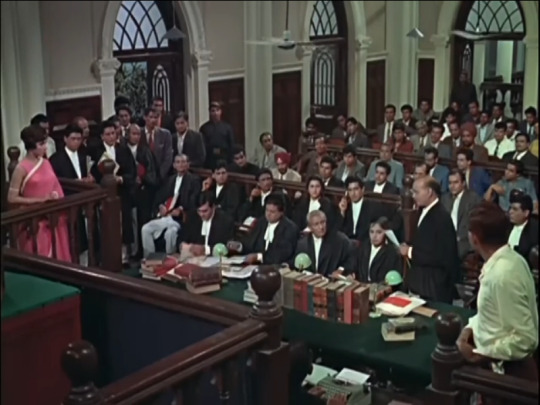
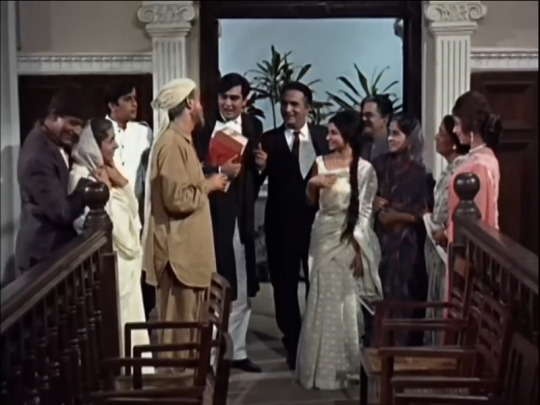
Waqt (1965) | dir. Yash Chopra
#waqt#waqt 1965#yash chopra#sadhana#sunil dutt#raaj kumar#achala sachdev#rishi kapoor#balraj sahni#surendra#sharmila tagore#manmohan krishna#leela chitnis#surendra nath#sumati gupte#sadhana shivdasani#indian cinema#hindi cinema#bollywood#cinema#movies#old bollywood#world cinema#classic cinema#films#cinematography#1960s#indian movies#south asian cinema#asian cinema
7 notes
·
View notes
Text

Remembering Achala Sachdev, Hindi cinema’s one of the most respected screen mothers, on her birth anniversary today (03/05/1920).
Achala was born in Peshawar in 1920. She started her acting journey with a movie called "Fashionable Wife" in 1938. Later, she moved to Pune after marrying Clifford Douglas Peters, who owned a factory in Bhosari.
Her career in the Hindi film industry began early, and she also worked with All India Radio starting from the 1940s. Throughout the 1950s, she appeared in many Hindi films, gaining fame for playing maternal roles. One of her most famous roles was as Balraj Sahni’s wife in the hit movie "Waqt" from 1965, where she was part of the iconic song “Ae Meri Zohra Jabeen”. Many fans started calling her Zohra Jabeen after that.
She acted in several memorable films, including "Azaad", "Arzoo", "Amanat", "Waqt", "Mera Naam Joker", "Julie", "Karm", "Haqeeqat", "Himalay Ki God Mein", "Hum Panchhi Ek Daal Ke", "Prem Pujari", "Hare Rama Hare Krishna", "Chandni", "Dilwale Dulhania Le Jayenge", "Kabhi Kushi Kabhe Gham", and "Kal Ho Naa Ho". Additionally, she appeared in English movies like "Nine Hours to Rama" and the Merchant Ivory film "The Householder".
Achala Sachdev passed away in Pune on April 30, 2012, due to respiratory failure.
7 notes
·
View notes
Photo
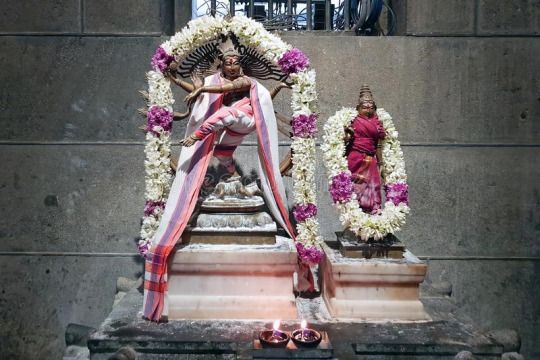
Sri Ramanasramam - The Matrubhuteswara Temple - Lord Siva dances in the form of Nataraja in front of the Mother, Sakti Devi
Arudra Darshanam is celebrated on the full moon night of Margazhi month of Tamil Calendar. This is observed on the thiruvadhirai nakshaththram (star) falling in this month.The festival marks the day of cosmic dance of Lord Shiva and it is celebrated in the form of Lord Nataraja. In Sri Ramanasramam, it is also celebrated in a grand manner. At around 4 am in 6 January 2023, the Nataraja idol in the Mathrubutheswara temple was anointed and decorated with flowers. This was followed by chanting of verses in praise of Nataraja followed by Aarthi...
******
Śrī Aruṇācala Navamaṇimālai - The Necklace of Nine Gems for Arunachala, Verse 1
🕉️
acalaṉē yāyiṉu maccavai taṉṉi
lacalaiyā mammaiyedi rāḍu — macala
vuruvilac catti yoḍuṅgiḍa vōṅgu
maruṇā calameṉ ḏṟaṟi.
Padacchēdam (words rearranged in natural prose order): acalaṉē āyiṉum, a-c-savai taṉṉil acalai ām ammai edir āḍum. acala uruvil a-c-satti oḍuṅgiḍa, ōṅgum aruṇācalam eṉḏṟu aṟi.
English translation:
Though actually one who is motionless, in that assembly hall he dances opposite mother, who is acalā. Know that when that śakti subsides back in the motionless form, Aruṇācalam is exalted.
Explanatory paraphrase:
Though [Lord Siva is] actually acalaṉ [one who is motionless, being the one immutable ground from which and in which everything else appears], in that assembly hall [of Cidambaram] he dances [in the form of Nataraja] opposite [the divine] mother, who is acalā [the consort of acalaṉ]. Know that when that śakti [the divine mother] subsides back in the motionless form [the fundamental form of Lord Siva], Aruṇācalam is exalted [that is, in the motionless form of Aruṇācalam, which rises high above all his other forms, Lord Siva shines exalted in his natural state].
Note :
The word Achalan means the motionless one and is a name of Lord Siva which is used to denote the fact that He is the immutable, Supreme Reality. The word Achalai means the consort of Achalan and is a name of Sakti, the Divine Mother.
Though He is motionless by nature, in Chidambaram Lord Siva had to dance in front of Sakti in order to bring Her frenzied dance to an end. But in the form of Arunachala Lord Siva remains ever motionless, and thus by the power of His mere stillness Sakti was irresistably attracted to Him and with great love she subsided in Him and became one with Him. Hence of all the forms of Lord Siva, Arunachala shines as the most exalted.
The words ‘ongum Arunachalam’ means ‘rises high’ or rises above others, and hence the words ‘ongum Arunachalam endru ari’ (know that He shines exalted as Arunachala) may also be taken to mean, know that Arunachala is superior (to Chidambaram)!
Source: Sri Arunachala Stuti Panchakam - Meaning: Sri Sadhu Om - Translation: Michael James
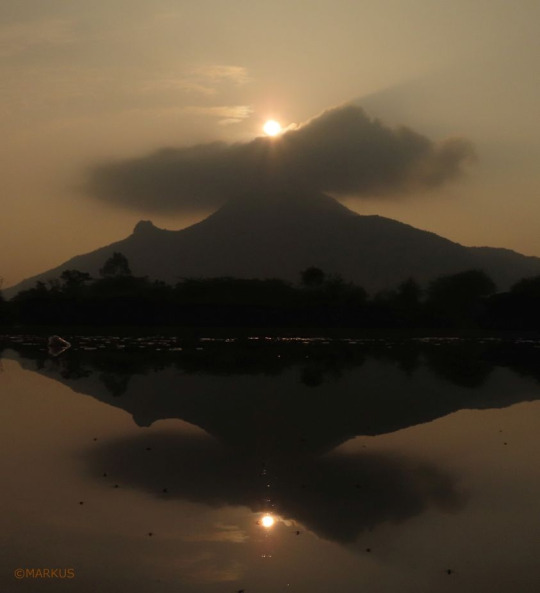
Arunachala - Photo by Markus Horlacher
#Bhagavan Sri Ramana Maharshi#Sri Arunachala Stuti Panchakam#Five Verses In Praise Of Arunachala#Arunachala Navamanimalai#AN v.1#The Necklace of Nine Gems for Arunachala#Chidambaram#Nataraja#cosmic dance#Arudra Darshanam#shakti#lord shiva#achala achalam#motionless immutable#achala devoid of thoughts#amala devoid of adjuncts#annihilation of the mind#nirmala pure#nischala motionless
25 notes
·
View notes
Text
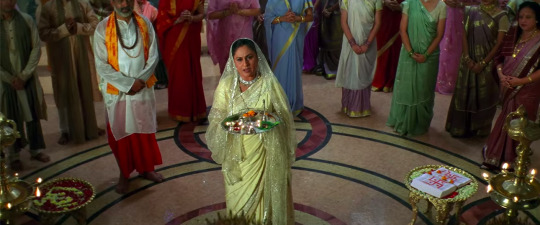



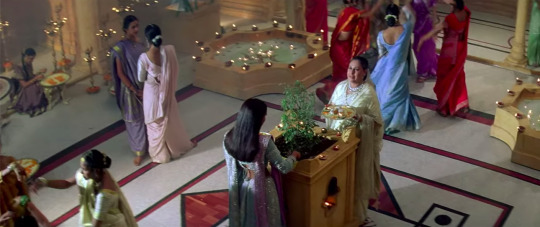
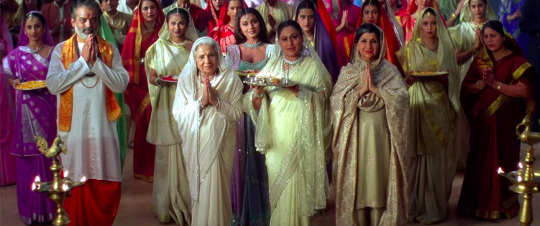
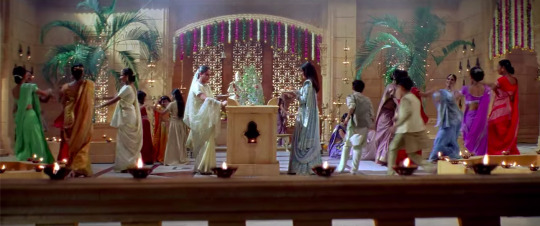
Kabhi Khushi Kabhie Gham... (2001)
10 notes
·
View notes
Text
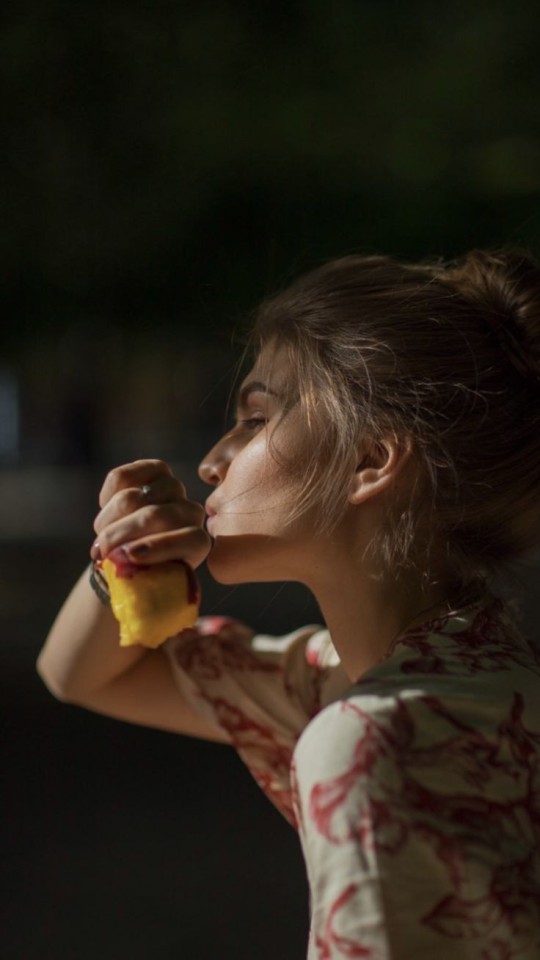
Aspettare, aspettarti.
Ma un solo presente
presuppone l’attesa: tu.
Se non ci sarai
all’altro capo,
è al nulla che il mio animo
si rivolge.
E allora tutto è vano,
io stesso non ho ragione
e i miei pensieri
mancano di significato e il mondo non esiste,
crollano le persone,
si dissolvono le città
come nuvole e vapore,
muore il sole, vive l’ombra,
tutto è spento, dormono
le ali, cessano di vibrare,
perchè soltanto attenderti
tiene sveglia la mia vita
Allora, aspetto.
.🦋.
🔸Kalindi Achala
5 notes
·
View notes
Text
love her





#LOVE HER#hes so right no one CAN resist the kaplan charm#mc: yael kaplan#li: achala grey#choices tpa#the phantom agent#playchoices#choices stories you play#choices stories we play
4 notes
·
View notes
Text
Ratha Saptami 2024: आरोग्य जीवन पाने के लिए रथ सप्तमी पर इस विधि से रखें उपवासRatha Saptami 2024: रथ सप्तमी 16 फरवरी को है. माघ मास के शुक्ल पक्ष की सप्तमी को रथ सप्तमी, अचला सप्तमी या आरोग्य सप्तमी के नाम से जाना जाता है।
#Achala saptami 2024 date#arogya saptami vrat#arogya saptami 2024#ratha saptami 2024#ratha saptami fast story#ratha saptami fast method#festivals photos#latest festivals photographs#festivals images#Dharm News in Hindi#Vrat News in Hindi#Vrat Hindi News
0 notes
Text
🐚 अपरा एकादशी व्रत कथा - Apara Ekadashi Vrat Katha
धर्मराज युधिष्ठिर भगवान श्री कृष्ण से कहते हैं: हे भगवन्! आपने वैशाख मास के कृष्ण शुक्ल की एकादशी अर्थात मोहिनी एकादशी के बारे मे विस्तार पूर्वक बतलाया। अब आप कृपा करके ज्येष्ठ कृष्ण एकादशी का क्या नाम है? तथा उसकी कथा क्या है? इस व्रत की क्या विधि है, कृपा कर यह सब विस्तारपूर्वक कहिए।
भगवान श्रीकृष्ण कहने लगे: हे राजन! ज्येष्ठ मास के कृष्ण पक्ष की एकादशी को अचला एकादशी तथा अपरा एकादशी दोनो ही नामों से जाना जाता है। क्योंकि यह अपार धन देने वाली है। जो मनुष्य इस व्रत को करते हैं, वे संसार में प्रसिद्ध हो जाते हैं।..
..अपरा / अचला एकादशी व्रत कथा को पूरा पढ़ने के लिए नीचे दिए गये लिंक पर क्लिक करें !
📲 https://www.bhaktibharat.com/katha/apara-ekadashi-vrat-katha
YouTube: https://www.youtube.com/watch?v=Hyi28-8F2zE
For Quick Access Download Bhakti Bharat APP:
📥 https://play.google.com/store/apps/details?id=com.bhakti.bharat.app
🐚 एकादशी - Ekadashi
📲 https://www.bhaktibharat.com/festival/ekadashi
#Apara #AparaEkadashi #Achala #AchalaEkadashi #Ekadashi #Katha #EkadashiVratKatha #VratKatha #Jyaistha #iskcon #iskconEent #KartikVrat #Haribol #HareKrishna
1 note
·
View note
Text
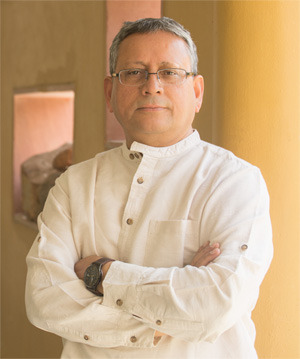
#Pervaiz Alam#Hindi Literature Audio#Hindi Urdu Interviews#Urdu Literature Audio#Achala Sharma#Exclusive Celebrity Interviews
1 note
·
View note
Text
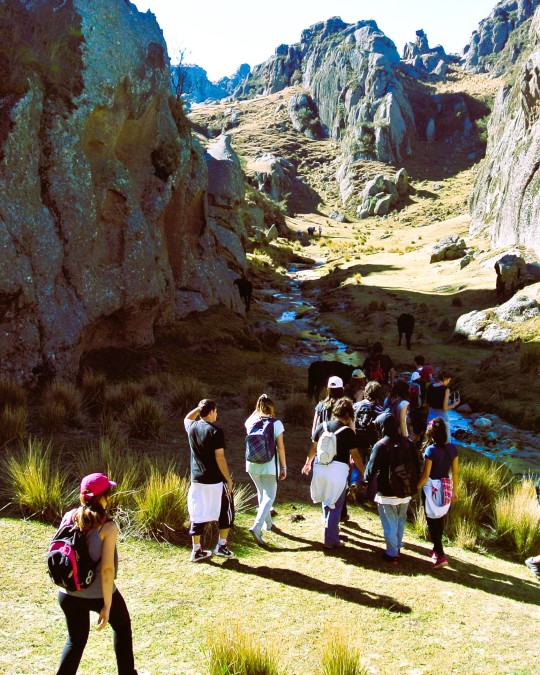
Los Gigantes, Córdoba, Argentina: Los Gigantes is the name given to a mountain range located in the central-western region of the province of Córdoba, in the Argentine Republic. It has an altitudinal development from highest to lowest, in a north-south direction, and is located within the so-called Sierras Grandes. It is the northern limit of the Pampa de Achala, to which it belongs, and together with it make up the locally known as High Peaks. Wikipedia.
76 notes
·
View notes
Text
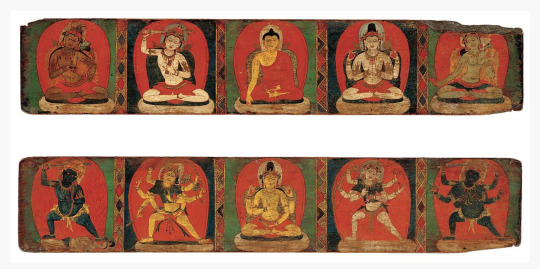
Pair of book covers with Buddhist deities. (Tibet, c. late 11th century).
The upper cover shows the most important Mahayana Buddhist deities: at center is the Buddha attaining enlightenment; at his right are the bodhisattvas Manjushri and Vajrapani; at his left sit Shadakshari Lokeshvara and Tara. Together, these deities represent enlightenment, compassion, correct method and practice; and protection from worldly harm. The lower cover, in contrast illustrates fierce protective deities flanking a central bodhisattva: Achala and Marichi at his right, and Mahapratisara and Mahakala on his left. Although these deities from the esoteric Vajrayana tradition appear in northern Indian sculptures and manuscript illustrations, only in Tibet are they grouped in a set as here.
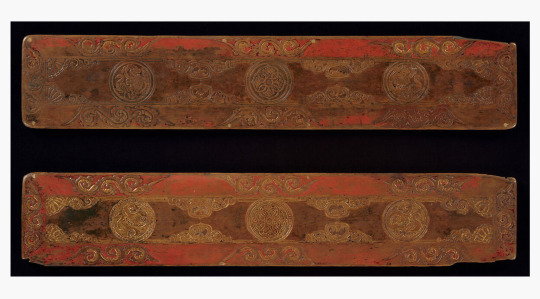
In the collection of the Metropolitan Museum of Art.
#beautiful books#book blog#books books books#book cover#books#incunabula#book design#book binding#tibetan buddhism
41 notes
·
View notes
Photo
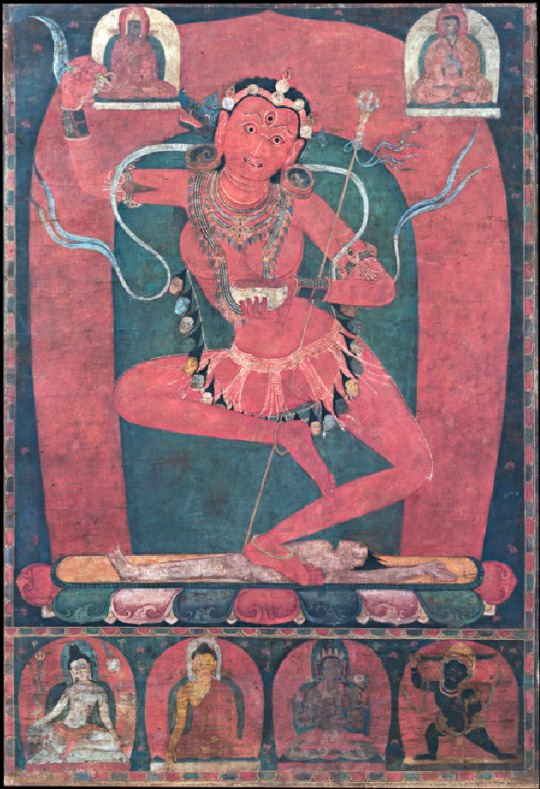
Unknown, Vajravarahi Vajrayogini, circa 1100, with two teachers above and four deities below.
At the top of the composition are two figures of teachers. On the left side, wearing a yellow hat, is very likely to be Atisha. The figure on the right is quite possibly Dromton.[77] Vajravarahi (Bari Gyatsa): "Vajravarahi, with a body red in colour, one face and two hands. The right [hand] holds, in a manner held aloft, a vajra curved knife. The left holds to the heart a blood filled skullcup and carrying a katvanga [in the bend of] the elbow. Having three eyes and bared fangs. Having a crown of five dry human skulls and a necklace of fifty fresh. Adorned with a garland of flowers. Wearing a lower garment of tiger skin. Standing in a dancing manner with the left leg extended in a half [vajrasana] posture." (Konchog Lhundrub).At the bottom left side is Simhanada Lokeshvara, white in colour, without ornaments. To the right side is Shakyamuni Buddha. On the bottom right side is Krodha Achala, wrathful in appearance, blue in colour, standing in an aggressive posture. To the left side is Chaturbhuja Lokeshvara with one face and four arms."... a lion with the head looking to the right. Above that is a moon disc ... the Lord of the World, Simhanada, with a body white in colour, having one face and two hands, three eyes, with the hair bound in a topknot. The right hand is extended above the knee in the refuge giving gesture and the left placed firmly on the seat behind the back. Having the appearance of an ascetic, seated in the lalitaraja posture. On the right side is a white snake coiled around an upright trident and on the left side, above a lotus stem is a skullcup filled with various fragrant flowers and adorned with a flaming sword." (From an edited version of the Bari Gyatsa by Ngorchen Konchog Lhundrub (1497-1557). GTKT, vol.12, folio 258. -Jeff Watt, October 1984. Vancouver, Canada).
211 notes
·
View notes
Photo

Sri Ramanasramam - Templo Matrubhuteswara - O Senhor Shiva dança na forma de Nataraja, em frente da Mãe Divina, Shakti Devi.
Arudra Darshanam é o festival que celebra a manifestação do Senhor Shiva como Nataraja, o Senhor da Dança Cósmica. É comemorado na noite de lua cheia do mês Margazhi do Calendário Tâmil, no dia em que coincidem a Lua Nova e a estrela Arudra -thiruvadhirai nakshathram- ou estrela do Senhor Shiva (Rudra). No Sri Ramanasramam, também é comemorado em grande estilo. Cerca das 4H00 de 6 de Janeiro de 2023, a imagem devovional de Nataraja no templo de Mathrubutheswara foi ungida e decorada com flores. Seguiu-se o canto de versos em louvor a Nataraja e o Aarthi...
🕉️
SRI ARUNACHALA NAVAMANIMALAI - O COLAR DE NOVE GEMAS PRECIOSAS PARA ARUNACHALA, VERSÍCULO 1
acalaṉē yāyiṉu maccavai taṉṉi
lacalaiyā mammaiyedi rāḍu — macala
vuruvilac catti yoḍuṅgiḍa vōṅgu
maruṇā calameṉ ḏṟaṟi.
Padacchēdam (separação das palavras): acalaṉē āyiṉum, a-c-savai taṉṉil acalai ām ammai edir āḍum. acala uruvil a-c-satti oḍuṅgiḍa, ōṅgum aruṇācalam eṉḏṟu aṟi.
Embora na verdade um que está imóvel, naquele salão de assembleia ele dança em frente da mãe, que é acalā. Saiba que quando essa śakti volta à forma imóvel, Aruṇācalam é exaltada.
Paráfrase explicativa:
Embora [o Senhor Shiva seja] na verdade acalaṉ [aquele que está imóvel, sendo o único fundamento imutável do qual e no qual tudo o mais aparece], naquele salão de assembleia de Chidambaram ele dança na forma de Nataraja em frente da divina mãe, que é acalā [a consorte de acalaṉ]. Saiba que quando essa śakti [a mãe divina] desaparece na forma imóvel [a forma fundamental do Senhor Shiva], Aruṇācalam é glorificada [isto é, na forma imóvel de Aruṇācalam, que se eleva acima de todas as suas outras formas, o Senhor Shiva brilha glorificado em seu estado natural].
Nota:
A palavra Achalan significa o imóvel e é um nome do Senhor Siva, que é usado para denotar o facto de que Ele é a imutável Realidade Suprema. A palavra Achala significa a consorte de Achalan e é um nome de Shakti, a Mãe Divina.
Embora Ele seja imóvel por natureza, em Chidambaram o Senhor Shiva teve que dançar na frente de Shakti para trazer a dança frenética de Shakti a um fim. Mas, na forma de Arunachala, o Senhor Shiva permanece sempre imóvel, e assim pelo poder da Sua mera quietude, Shakti foi irresistivelmente atraída por Ele e com muito amor ela se acalmou Nele e se tornou um com ele. Assim, de todas as formas do Senhor Shiva, Arunachala brilha como a mais gloriosa.
As palavras ongum Arunachalam significam ‘eleva-se alto’ ou eleva-se acima dos outros, e, portanto, as palavras ongum Arunachalam endru ari (saiba que Ele brilha glorificado como Arunachala) também podem significar, saiba que Arunachala é superior (a Chidambaram)!
Fonte: Sri Arunachala Stuti Panchakam - Significado: Sri Sadhu Om - Tradução: Michael James

Arunachala - Fotografia de Markus Horlacher
#Bhagavan Sri Ramana Maharshi#Michael James#Arunachala Stuti Panchakam#Cinco Poemas Em Louvor de Arunachala#Arunachala Navamanimalai#AN v.1#O Colar de Nove Gemas Preciosas para Arunachala#Chidambaram#Nataraja#Dança Cósmica#Arudra Darshanam#shakti#lord shiva#achala achalan#imóvel imutável#achala livre de pensamentos#amala livre de adjuntos#extinção do pensamento#aniquilação da mente#nirmala puro#nischala imóvel
4 notes
·
View notes
Text
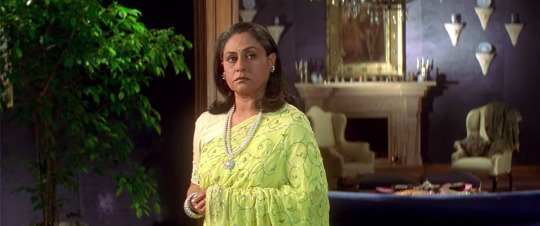



Kabhi Khushi Kabhie Gham... (2001)
8 notes
·
View notes
